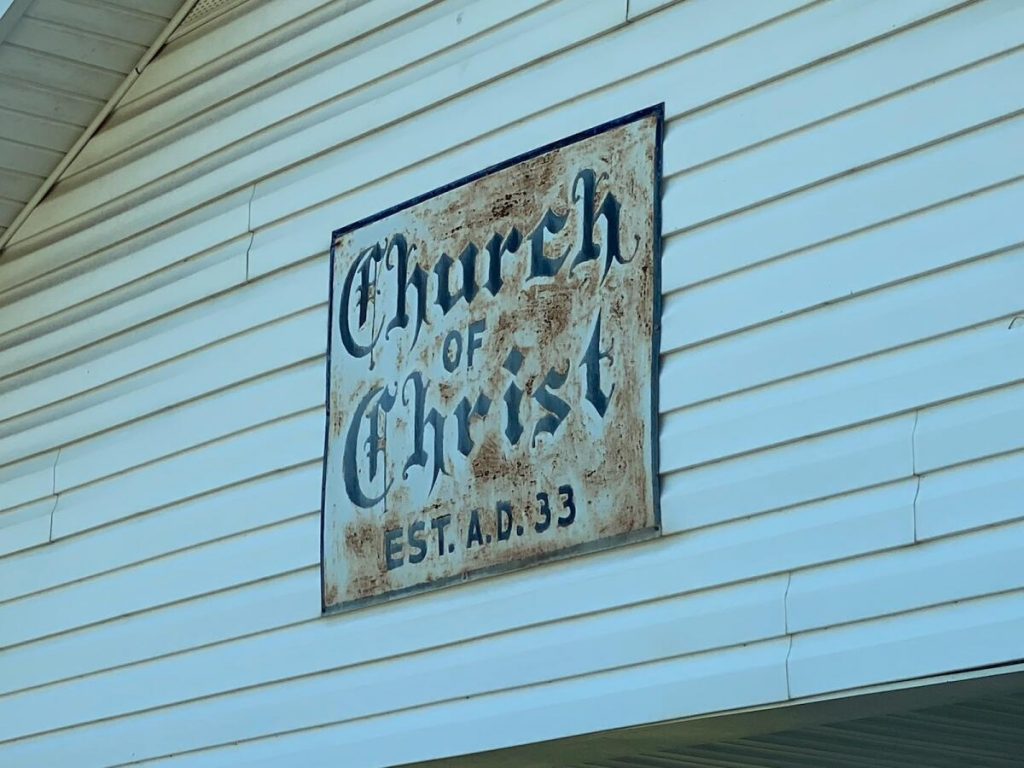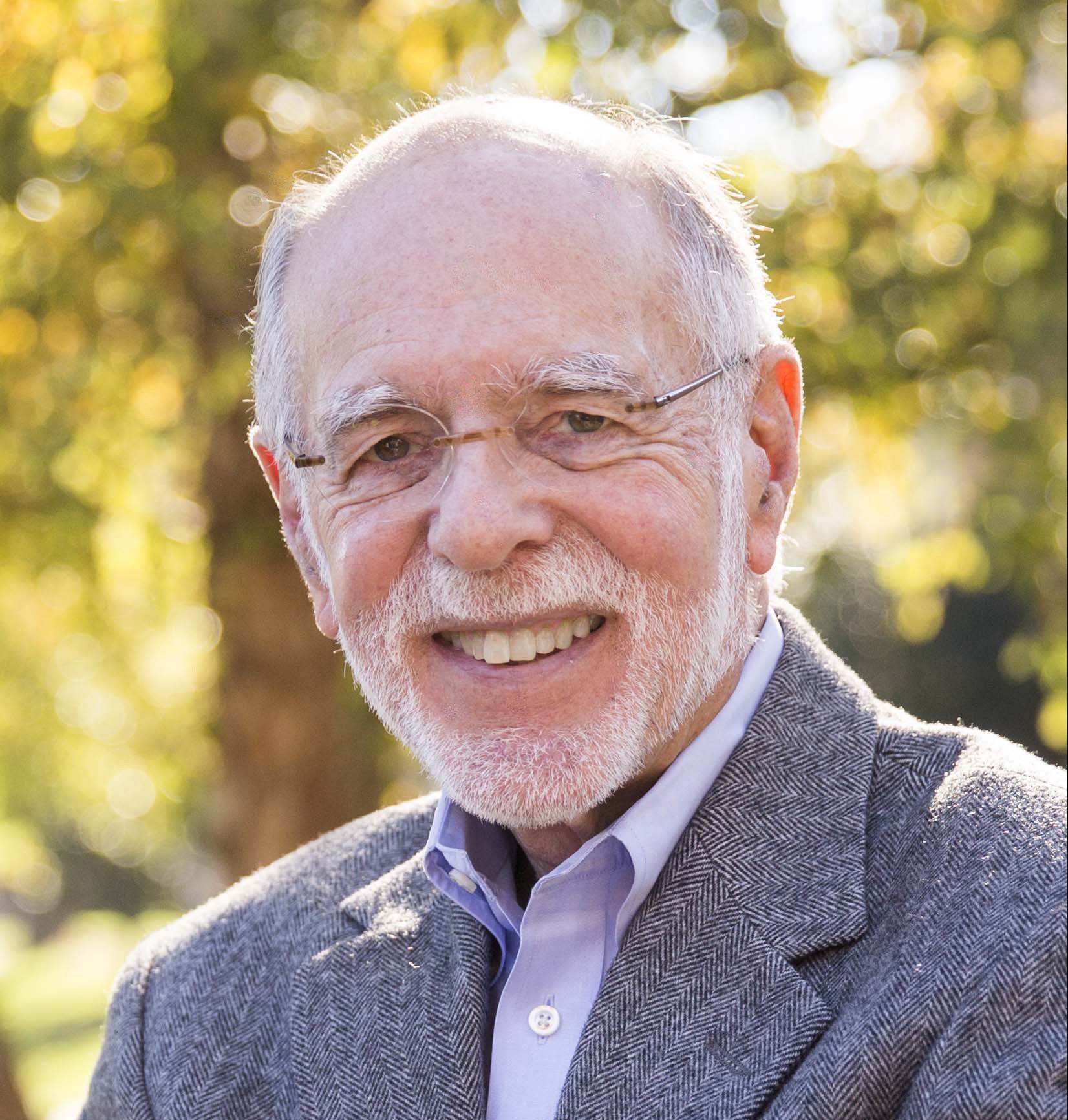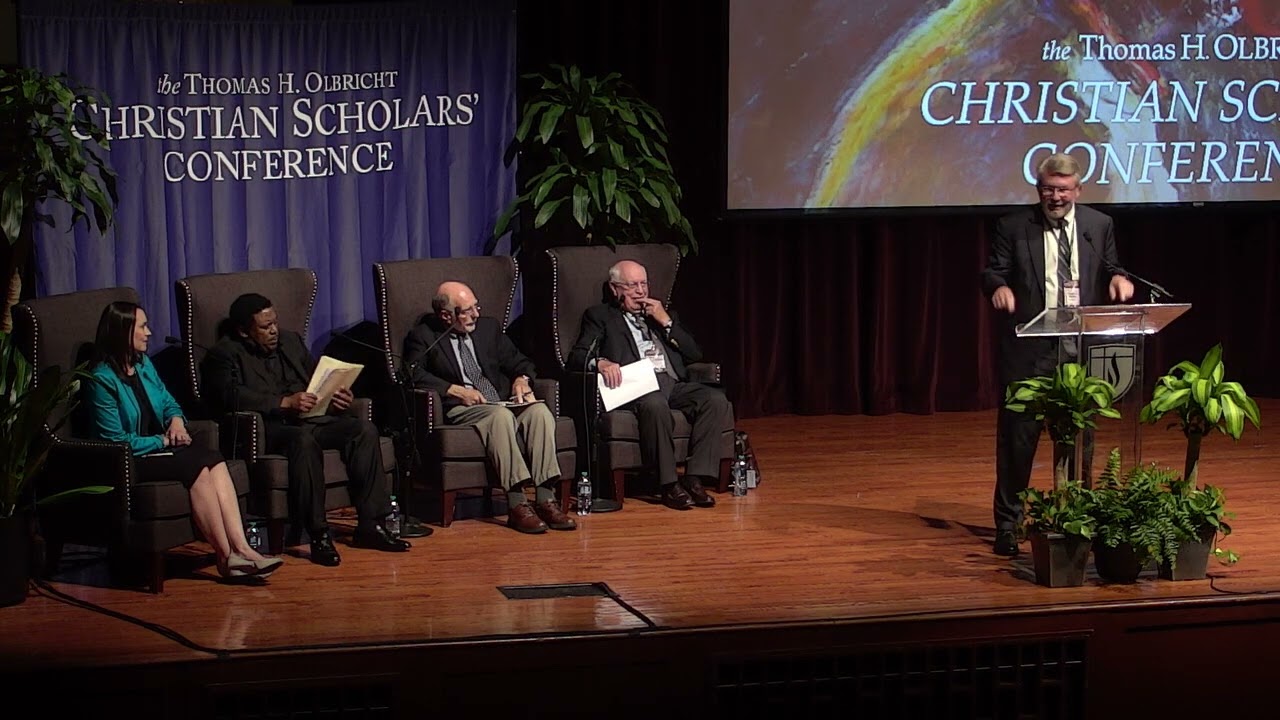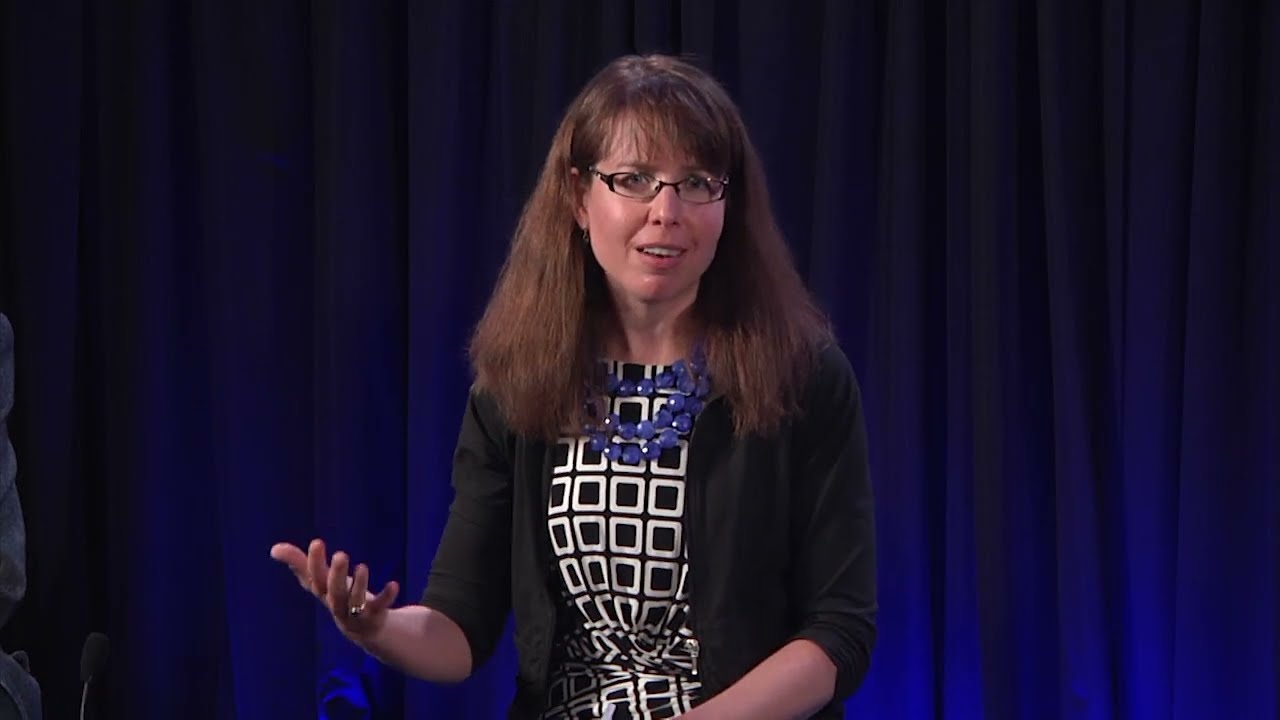
“The Myth of the Eternal Return”: From the Primitives to American Religion and Politics and Points In Between
Volume 1 | June 6, 2022
Theme: Religion & Politics
Discipline: American Religious History
The noted phenomenologist of religion, Mircea Eliade called it “the myth of the eternal return”1—the attempt on the part of those he describes as primitive people to escape their own profane time, their own historical moment, and to live in the beginning of time, in the primordium, in the time of creation.
When Eliade uses the term myth, he does not mean a falsehood or fable. Rather, a myth—whether true or false—is a story around which we orient our lives, a story that gives us meaning. Myths performed that role for primitive people and perform that same function today.
In the primitive imagination, according to Eliade, the primordium was the time of the gods when all things were new, undefiled and uncorrupted by human history. Indeed, for Eliade’s primitive people, the primordium was sacred time and therefore real, while human history—including one’s own time—was profane time, the time of brokenness, of tragedy, sustained by merely human authority. If sacred time was real, profane time was not, and that is why primitive people, through their rituals and festivals, sought to repeat the activity of the gods and to somehow join the gods in the time of pure beginnings.

The time of pure beginnings was also profoundly tribal, for those who embraced it typically tied the creative activity of the gods to their own tribal space. It was not uncommon for certain tribes to imagine that they, and they alone, lived at the center of the earth, marked by the sacred pole—a totem pole, if you will—around which they built their villages. The sacred pole was but an extension of the axis mundi, the axis of the world, which connected earth to the dwelling place of the gods. In this way, their geographical location became a sacred space, even as they lived in sacred time. And while any given tribe imagined that it lived at the axis mundi, each tribe relegated others to outer darkness, severed from the gods and therefore marked by profane time and space.
Finally, the “myth of the eternal return” is fundamentally an erasure of history, an important function, indeed, since history always bears the reality of human guilt. One who lives in the time of the gods and inhabits sacred space, therefore, can claim an innocence denied to those who live in a space and a time that is merely profane.
The extent to which Eliade’s analysis pertains to New Testament claims about Jesus is striking. Jesus urges his followers to “abide in me” (Jn. 15:4), but the Jesus in whom His disciples abide is also the primordial origin of the universe. The writer of Hebrews in 1:2, for example, argues that through Jesus the Christ, God “created the world,” and that Jesus “upholds the universe through his word of power.” The Gospel of John in 1:3 contends that “all things were made through him, and without him was not anything made that was made.” The sum of the matter is this—that if, in primitive religions, the primordium was the time of the gods, in the Christian faith the primordium was and is the time of Jesus the Christ through whom the universe came into existence.
There are many differences between Eliade’s primitive religions and the Christian faith, but chief among them is this—that while primitive religions typically served tribal interests, the New Testament presents Jesus the Christ as the universal redeemer of all humankind. “There is neither Jew nor Greek,” Paul writes, “neither slave nor free.” Indeed, “there is no male and female, for you are all one in Christ Jesus.” (Gal. 3:28)
The Apostle Paul develops this theme more cogently than any other New Testament writer, proclaiming that
[Christ] is . . . the first-born of all creation, for in him all things were created, in heaven and on earth, visible and invisible, whether thrones or dominions or principalities or authorities—all things were created through him and for him. He is before all things, and in him all things hold together.
When one places this passage in the context of the biblical vision of the kingdom of God which the biblical writers insist will finally triumph over the kingdoms of earth, it seems clear that Paul uses “the myth of the eternal return” to counter imperial Rome and the way it used that very same myth to bolster Roman dominance. Indeed, as Joshua Noble (Thomas Aquinas College) demonstrates in his essay in this section of Paradoxum, after Virgil (70 BCE–19 BCE) wrote that the lost golden age has returned or will do so in short order, Rome routinely portrayed itself as the restoration of that “golden age” which was then connected with a whole succession of emperors. The Roman historian, Tacitus (56–120 CE), for example, described the reign of Augustus Caesar (27 BCE–14 CE) as a “Golden Age” (Dial. 12.3), and even after the New Testament period, the emperor Hadrian (117–138 CE) still appealed to that vision. But according to Paul, even the thrones of the Roman emperors “were created through him (Jesus the Christ) and for him” since “he is before all things, and in him all things hold together.”
“The myth of the eternal return,” however, was hardly confined to religions that Eliade described as primitive or archaic. One finds that very same myth at work both in Puritan New England and in the founding of the United States.
The New England Puritans, for example, claimed to be a latter-day Israel, re-enacting Israel’s entry into the Promised Land. England became their Egypt, the Atlantic Ocean their Red Sea, and the American wilderness their land of Canaan. Not only that, but there, in their latter-day promised land, this “new Israel” restored the primitive church so completely, they believed, that their churches were virtually identical to what “the Lord Jesus [would erect] were he here himself in person.”2
Having restored to their satisfaction a biblical golden age that merged ancient Israel and the primitive church into a single, sacred reality, the Puritans were always wary of a catastrophic fall from the golden age they had created. The Puritan poet, Michael Wigglesworth, for example, voiced 1662, in the midst of a devastating drought, the common belief that such a fall had already begun.
Our day continued many yeers,
And had no night at all:
Yea many thought the light would last,
And be peretuall.
Such, o New-England, was thy first,
Such as they best estate:
But, Loe! A strange and suddain change
My courage did amate . . . .
Moreover, I beheld & saw
Our welkin overkest,
And dismal clouds for sun-shine late
O’respread from from east to west.
The air became tempestuous;
The wilderness gan quake:
And from above with awfull voice
Th’ Almighty thundering spake . . . .
Are these the folk whom from the brittish Isles,
Through the stern billows of the watry main,
I safely led so many thousand miles,
As if their journey had been through a plain?
Whom having from all enemies protected,
And through so many deaths and dangers well directed?
For thinke not, O Backsliders, in your heart,
That I shall still your evill manners beare:
Your sins me press as sheaves do load a cart,
And therefore I will plague you for this geare
Except you seriously, and soon, repent,
Ile not delay your pain and heavy punishment.3
Slightly more than 100 years later, the American founders also appealed to the myth of the golden age, for they placed the American founding in the context of the creation—the primordial time that stood before historical time. Instead of grounding the “inalienable rights” of humankind in any human authority or any human exemplar, they grounded those rights in “Nature and Nature’s God.” The fact that those “inalienable rights” were grounded in nature is what made those rights “self-evident,” leading Thomas Paine, for example, to write of the new American nation, “We are brought at once to the point of seeing government begin, as if we had lived in the beginning of time. The real volume, not of history, but of facts, is directly before us, unmutilated by contrivance of the errors of tradition.”4
The historian Fred Somkin wrote of this perspective, so common to the American founding, that “such a point of view argued an American alienation from the grasp of an organic, efficacious past, as though America were itself a kind of rebuke to time. An appeal to the nature of man, rather than to his history, evidenced a faith in something that had emerged unscathed from the gauntlet of historical time.”5
The vision of an America disconnected from historical time has produced a deeply rooted sense of historylessness that has defined the American people ever since. In the early nineteenth century, in the immediate aftermath of the American founding, it prompted the emergence of two new, highly successful religious movements, both informed by variations of “the myth of the eternal return.” The Church of Jesus Christ of Latter-day Saints (Mormons) and the Disciples/Churches of Christ both advocated what they called “the restoration of primitive Christianity.”6
In the case of the Disciples/Churches of Christ, Professor Seth Perry, a historian of American religion at Princeton University, has argued that early Disciples were so firmly committed to the tools of historical scholarship that, in their case, the notion of “historylessness” is a misnomer.7 Perry is right about their commitment to historical scholarship but mistaken in his judgment that historical awareness ultimately precludes the eclipse of history. For when one seeks to recover a religious phenomenon from an entirely different culture almost two thousand years ago, historical scholarship can take one only so far, and when one reaches the limits of historical scholarship, creative imagination inevitably takes over and fills in the gaps.
This fundamental truth explains why so many of the twentieth-century heirs to Alexander Campbell’s restoration vision—most notably, Churches of Christ—routinely placed inscriptions onto their church buildings that read, “Church of Christ, Established A.D. 33.” Often, those inscriptions were placed on cornerstones that anchored the buildings, ensuring that future generations could not fail to grasp the intended truth that these churches were identical to the Jerusalem church on the day of Pentecost.
Mormons also sought to “restore” the primitive church, but in their case the distance between primordium and the present collapsed even more completely than in the case of Disciples/Churches of Christ. While Alexander Campbell taught his Disciples/Churches of Christ that they could hear the voice of God only through the biblical text, Joseph taught his followers that God would speak to them quite directly, just as He had spoken to the prophets and apostles and even to Adam in the Garden of Eden. In this way, Mormons embraced with a vengeance the myth of pure beginnings—a myth that transcended history and allowed the Latter-day Saints to walk and talk with the Creator of all things. Indeed, Mormons trace their American beginnings to a wooded spot in upstate New York where God spoke directly to young Joseph Smith and instructed him to restore to the earth the true and perfect church that had been lost for so many centuries.
It is a mistake to imagine that “the myth of the eternal return” points its adherents only to the time of the gods—or the time of creation—in the classical sense. That was true for Eliade’s primitive people and ancient religions, but what about modern people who discount “the time of the gods” as nothing more than myth and fable? The primordium for them is still the strong time, the real time, and the sacred time, precisely because it connects its adherents with meaning and power and bestows upon them an identity that transcends time and place.
For many contemporary Americans, the decades of the 1940s and 1950s comprised just such a time. In his splendid memoir, In the New World, Lawrence Wright recalls,
When my father went off to war, I understood that he was going to make the world safe for democracy . . . . [He had] matured in a magic age, the 1940s, when great evil and great good faced each other. In that splendid moment he knew which side he was on. He was an American farm boy doing what God and his country had designed for him. . . . Here he was, saving the world. I grew up expecting to inherit his certainty.8
But the certainty of the American golden age of the 1940s and 1950s evaporated in the dramatic changes that overtook the nation in the 1960s and 1970s. The 1940s and early 1950s, for example, was the last period in American history in which whites, Christians, heterosexuals, and males occupied privileged positions in American society apart from serious challenges from those who had been excluded from mainstream American life. But the social revolution of the 1960s and 1970s made space for Muslims and Sikhs, Buddhists and Hindus, Blacks and Browns, women, gays, lesbians, and transgender Americans, leading many in the traditionally privileged groups to regard the 1940s and early 1950s as the American golden age.
In response, the Christian Right, under the leadership of Jerry Falwell, Pat Robertson, and other fundamentalist luminaries, launched what amounted to a restoration movement that in microcosmic form mimicked “the myth of the eternal return.” They sought to erase both the history and the cultural changes of the 1960s and 1970s and restore the golden age of white, Christian America.
To be sure, that “golden age” had been created over the course of 350 years, defined first by slavery, then by unspeakable brutality against people of color and Jim Crow segregation. Even so, white Americans from the nation’s founding had always believed that white superiority and Black inferiority was part of the natural order of things, guaranteed by “Nature and Nature’s God,” to use the words of the Declaration of Independence. And that is why the erasure of history, central to the myth of the eternal return and implicit in this twentieth-century attempt to restore the American “golden age,” enabled its advocates to claim an innocence that flew in the face of their crimes.
Blacks were quick to discern the innocence that so many whites now sought to claim. James Baldwin, for example, wrote to his nephew that “my country and my countrymen have destroyed and are destroying hundreds of thousands of lives and do not know it and do not want to know it.” Most of all, he wrote, “It is the innocence that constitutes the crime.”9
It was that very sense of ahistorical innocence that protected the collective conscience of America’s evangelicals as they sought to restore the lost golden age of the 1950s by building on the myth of white superiority—a fact highlighted by Randall Balmer (Dartmouth College) both in his recent book, Bad Faith: Race and the Rise of the Religious Right10 and in his 2021 CSC plenary presentation—“A Different Direction”—published here.
And that brings us to more recent American history with its culture-wars and its fractious brand of politics. Few have grasped the fact that what stands at the heart of these culture-wars is, yet once again, the myth of the eternal return that builds on the work of fundamentalist leaders like Jerry Falwell and Pat Robertson who, throughout the 1980s, sought to restore the golden age of the 1940s and early 1950s.
While that struggle was championed chiefly by fundamentalist Christians during the waning decades of the twentieth century, it has evolved into the defining theme of a very large swath of American politics as we enter the third decade of the twenty-first century. Along the way, the political version of that quest for the American golden age has embraced values often alien to the great tradition of the Christian faith. Undeterred, however, most fundamentalist and evangelical Christians still support the child, birthed by their fathers and mothers some fifty years ago, in spite of that child’s often anti-Christian beliefs and behavior. That is the conundrum that makes Professor John Fea’s plenary lecture at the 2021 CSC—and published in this inaugural issue of Paradoxum—so compelling. Clearly, however, what soothes the collective conscience of these conservative Christians is the sense of innocence that always attaches itself to any effort to leapfrog over history and recover an imagined golden age, lost in the mists of time.
Like James Baldwin in the 1960s, however, many Black Americans in the early twenty-first century were quick to discern how this rejection of history was at the very same time a false affirmation of American innocence. Ta-Nehisi Coates, for example, wrote to his son,
There exists all around us an apparatus urging us to accept American innocence at face value and not to inquire too much. And it is easy to look away, to live with the fruits of our history and to ignore the great evil done in all of our names.
He concluded,
The mettle that it takes to look away from the horror of the prison system, from police forces transformed into armies, from the long war against the black body, is not forged overnight. This is the practiced habit of jabbing out one’s eyes and forgetting the work of one’s hands.”11
But innocence has always been the handmaiden of golden age mythology that inevitably erases history along with the guilt that history always bears.
- Mircea Eliade, The Myth of the Eternal Return, or, Cosmos and History (Princeton: Princeton University Press, 1955).
- Robert Ashton, ed., The Works of John Robinson, Pastor of the Pilgrim Fathers (Boston: Jonathon Cape, 1851), 2:43.
- Michael Wigglesworth, “God’s Controversy with New England,” 1662, in Conrad Cherry, ed., God’s New Israel: Religious Interpretations of American Destiny, revised ed. (Chapel Hill: University of North Carolina Press, 1998), 42–53.
- Thomas Paine, Rights of Man [1791–1792], in The Complete Writings of Thomas Paine, ed. Philip S. Foner (New York: Citadel, 1945), 1:376.
- Fred Somkin, Unquiet Eagle: Memory and Desire in the Idea of American Freedom, 1815–1860) (Ithaca, N.Y.: Cornell University Press, 1967), 57.
- On the restoration visions of Mormons and Disciples/Churches of Christ, see Richard T. Hughes, “Two Restoration Traditions: Mormons and Churches of Christ in the Nineteenth Century,” Journal of Mormon History 19 (Spring 1993): 34–51
- Seth Perry, “Scripture, Time, and Authority among Early Disciples of Christ,” Church History 85 (December 2016): 776–78.
- Lawrence Wright, In the New World: Growing Up with America, 1960–1984 (New York: Alfred A. Knopf, 1988), 109–110.
- James Baldwin, The Fire Next Time, in Toni Morrison, ed., Baldwin: Collected Essays (New York: Library Classics of the United States, 1998), 292–93.
- Randall Balmer, Bad Faith: Race and the Rise of the Religious Right (Grand Rapids, Mich.: Eerdmans, 2021).
- Ta-Nehisi Coates, Between the World and Me (New York: Spiegel and Grau, 2015), 8–9 and 98.



